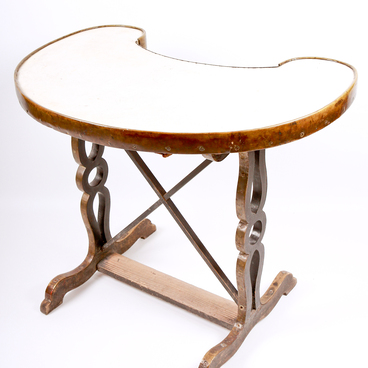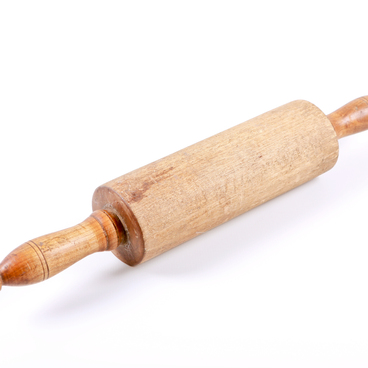There are various items of a women’s peasant costume of the 19th century in the collection of the Kasimov Museum-Reserve, which also includes soroka — an ancient headdress of a married woman.
In Russia, the headdress had several functions. Firstly, it was practical and protected the head from cold or hot weather. Secondly, it was a mark of a high status and could tell the background of its owner — their background, marital or financial status.
The headdress was a mandatory part of the costume. Young girls used to wear headbands, venets (maiden’s headdress), ribbons, fillets that did not cover their hair. But married women had to wear the headdress which completely covered their heads, whatever their age was, they wore soroka but less often — tied a headkerchief.
A traditional headdress of a married woman was multilayered. At first, they put on a kichka — a soft canvas hat which tightly covered the head and had a thick flattened raised base in front.
Two pieces of fabrics were attached to the kichka: the first one was called ‘pozatylen’ which protected the back of the head, and second one was ‘ochelye’ which covered the forehead. A cover was put on on top which, like the whole headdress, was called soroka. It was sewn from soft velvet, red calico and silk, and decorated with beads and fringe on its top. The soroka from the museum collection was decorated with ochelye, and bead pozatylen of the owner was tied up in the back only on holidays.
Everyday soroka was sewn from inexpensive fabrics and was partly decorated. At home, women wore them without pozatylen and sometimes without ochelye. Festive soroka was elegant: it was decorated with colored ribbons, flowers and feathers.
A girl wore soroka for the first time on the wedding day or on the day after the wedding night. That meant she acquired the new status of a married woman, so this was accompanied by a special solemn ceremony. Elderly women gathered around the bride to plait her hair, put the two plaits with a wreath on the head or folded them on the crown, and then carefully put the headdress on. The ceremony was held with songs, where the girl was supposed to say goodbye to her ‘freedom and maiden beauty’ and became a married woman.
In Russia, the headdress had several functions. Firstly, it was practical and protected the head from cold or hot weather. Secondly, it was a mark of a high status and could tell the background of its owner — their background, marital or financial status.
The headdress was a mandatory part of the costume. Young girls used to wear headbands, venets (maiden’s headdress), ribbons, fillets that did not cover their hair. But married women had to wear the headdress which completely covered their heads, whatever their age was, they wore soroka but less often — tied a headkerchief.
A traditional headdress of a married woman was multilayered. At first, they put on a kichka — a soft canvas hat which tightly covered the head and had a thick flattened raised base in front.
Two pieces of fabrics were attached to the kichka: the first one was called ‘pozatylen’ which protected the back of the head, and second one was ‘ochelye’ which covered the forehead. A cover was put on on top which, like the whole headdress, was called soroka. It was sewn from soft velvet, red calico and silk, and decorated with beads and fringe on its top. The soroka from the museum collection was decorated with ochelye, and bead pozatylen of the owner was tied up in the back only on holidays.
Everyday soroka was sewn from inexpensive fabrics and was partly decorated. At home, women wore them without pozatylen and sometimes without ochelye. Festive soroka was elegant: it was decorated with colored ribbons, flowers and feathers.
A girl wore soroka for the first time on the wedding day or on the day after the wedding night. That meant she acquired the new status of a married woman, so this was accompanied by a special solemn ceremony. Elderly women gathered around the bride to plait her hair, put the two plaits with a wreath on the head or folded them on the crown, and then carefully put the headdress on. The ceremony was held with songs, where the girl was supposed to say goodbye to her ‘freedom and maiden beauty’ and became a married woman.

